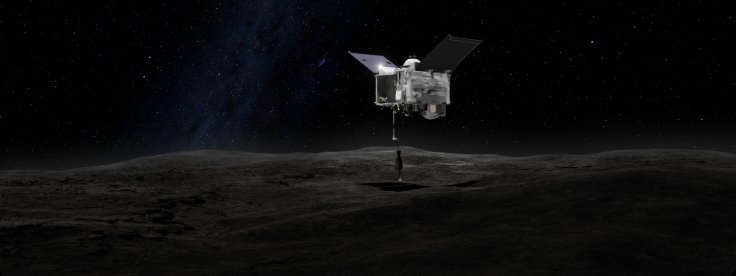Several space experts strongly believe that asteroid Bennu may crash on the earth during its close approach. Even though NASA has dismissed these claims, a section of conspiracy theorists argues that the United States space agency is involved in an intentional cover-up to avoid public panic. However, the space agency has been studying the asteroid closely for the past year using its OSIRIS REx mission.
NASA's OSIRIS REx mission has now found that asteroid Bennu is very much active with observable events happening on its surface. Recently, NASA scientists detected particle plumes ejecting off the surface of Bennu asteroid, and it strongly suggests that the space body is in an active state.
Bennu is a rubble-pile asteroid

It should be noted that asteroid Bennu is basically a rubble-pile asteroid, where a group of rocks is held together by gravity rather than a single object. Particles emitting from an asteroid's surface is very rare, and it is for the first time that scientists had a close-up observation of this phenomenon.
Interestingly, the size of the particles emitted from the surface of Bennu asteroid ranges from single-digit to tens of centimetres in length. Some of these particles moved slowly across space, while others screeched through the darkness of the space at mindblowing speeds.
Fortunately, none of these particle ejections posed a threat to the activity of the NASA spacecraft. Scientists speculate that similar ejections might have taken place on asteroid Bennu even before the arrival of the NASA spacecraft in December 2018.
Is Bennu posing a threat to life on earth?
A few months back, a study conducted by a team of researchers at the US planetary defence team had suggested that NASA's plans to deflect the trajectory of asteroid Bennu will not fetch the desired results due to its mammoth size. The asteroid has a diameter of 500 metres and a possible impact on the earth could unleash energy equivalent to thousands of atomic bombs dropped in Hiroshima during World War II.
Kirsten Howley, a physicist at Lawrence Livermore National Laboratory and the lead author of this study had suggested that learning the trajectory of this space body is very much necessary to combat a possible catastrophe.
"The probability of a Bennu impact maybe 1 in 2,700 today, but that will almost certainly change, for better or worse - as we gather more data about its orbit. Delay is the greatest enemy of any asteroid deflection mission. That's why there's urgency in getting viable deflection platforms on the shelf today," said Howley.









